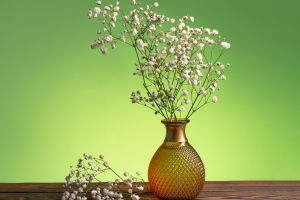Secrets Of A Rose
The rose, often hailed as the queen of flowers, has captivated humanity's imagination for millennia. Embedded within its delicate petals lies a history rich with symbolism and utility that spans cultures and continents.
From ornamental gardens to therapeutic uses, roses have adorned human life in myriad ways. However, the ephemeral nature of their bloom prompts a pursuit of knowledge and techniques to extend their flowering period, thereby maximizing the joy and beauty they bring into our lives.
What is the Value of a Rose?
To comprehend the effort to extend the flowering period of roses, one must first appreciate their value. Roses are more than just visually stunning flowers; they are a cornerstone in the floral world due to their unmatched fragrance, variety, and symbolism. Culturally, roses have been a medium of expression, encapsulating love, politics, and beauty across different societies. They hold a prized position in the perfume industry, with rose oil being one of the most intricate fragrances to extract, symbolizing luxury and sophistication.
Ecologically, roses contribute significantly to the biodiversity of a garden, attracting and sustaining pollinators such as bees and butterflies. Their variety offers endless possibilities for landscape design, from trellises adorned with climbing roses to gardens lined with shrub varieties. The act of gardening itself, particularly the care for roses, fosters a connection with nature, encouraging mindfulness and a sense of peace.
How to Prolong the Bloom Period of Roses?
1. Begin with choosing rose varieties known for their long blooming periods. Floribunda and Grandiflora roses, for instance, are celebrated for their repeat blooms throughout the growing season.
2. Roses demand well-draining soil, enriched with organic matter, and a position that basks in at least six hours of sunlight daily. Ensuring these conditions can significantly impact their health and blooming capacity.
3. Pruning is essential for rejuvenating rose plants and encouraging more blooms. Removing dead or weak branches in early spring, just as new growth appears, promotes a healthier plant that's more capable of sustained blooming.
4. Roses are heavy feeders. Applying a balanced, slow-release fertilizer designed for roses at the start of the season and following up with regular feedings can support vigorous growth and extended blooms.
5. Keeping roses free from pests and diseases is crucial. Regular inspections and timely treatment with appropriate organic or chemical controls can prevent issues that might otherwise shorten the blooming period.
Extending the flowering period of roses is both an art and a science, requiring attention to detail, patience, and a deep appreciation for the intrinsic value of these flowers.


